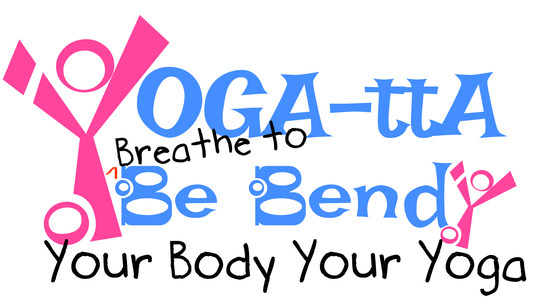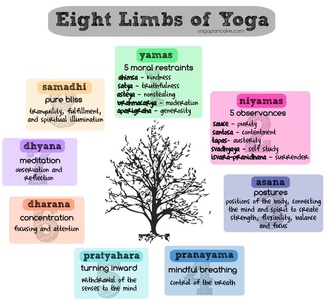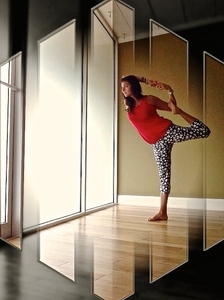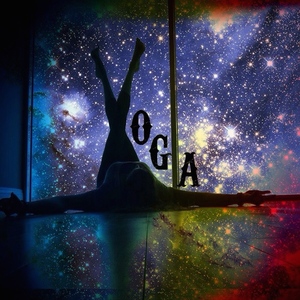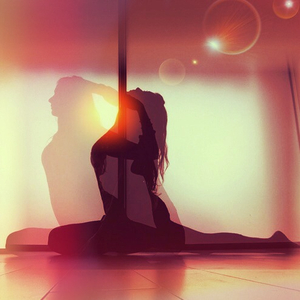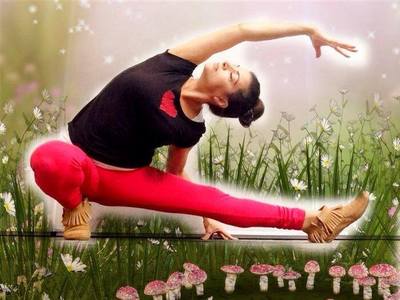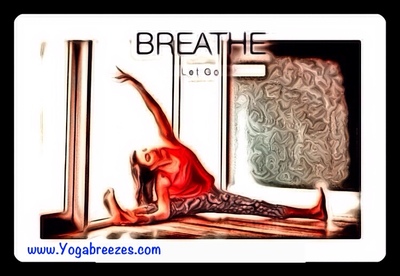There are very few things in our control regarding the environment and how it effects our body. External demands including work, daily stresses, important commitments, and variant demands act upon our body's internal holistic thermometer. These demands stimulate the way we view ourselves in time and space and influence us in both a conscious and unconscious way; this is deemed Proprioception. (5) We can support the body's healthy proprioceptive function and combat these demands by incorporating the holistic practice of Yoga. (2, 4, 5, 8) Yoga practice is not merely a physical exercise; it requires every physiological body function as well as unconscious levels of awareness to construct the perfect bridge connecting the mind and body to conscious and unconscious levels of awareness. (2, 4, 5, 8) Yoga allows us to cultivate an almost "6th sense" awareness of our body in time and space on a physical as well as unconscious plane of existence.
The body finds its proprioception with great efficiency in Yoga practice by observing the eight aspects, or limbs of yoga. (8) Introducing the eight limbs of yoga to our hectic lives helps us focus on living in the here and now to combat external demands placed upon us. Yoga helps keep the body and mind grounded and centered amidst the chaos of existence. Linking two limbs of yoga, mainly physical asana practice and pranayama breathing, provides the body with the perfect solution to stimulating and cultivating our own 6th sense of proprioception. Where the breath goes, the body follows; Yoga-tta Breathe to Be Bendy.
We now turn our focus and couple Yoga's physical practice with Pranayama breathing to strengthen our body's proprioceptive response mechanism on both the conscious and unconscious plane. This will provide a gateway into the VIP suite of our pulmonary and cardiorespiratory systems. (8) Conscious aspects of proprioception allow the yoga student to recognize his or her body's position relative to time and space. (5) We use Pranayama breathing and yoga practice together and assist skeletal muscles in receiving the necessary oxygen to fuel the body during movement on a conscious level. Stand on one leg, and witness how the body works to right itself in efforts to balance and avoid falling.
The second tier of proprioception deemed unconscious awareness is also regulated while the yoga student works diligently to breathe through yoga physical practice in efforts to balance and avoid falling. Using the same example, Stand on one leg again, only now try to breathe evenly, control the disorientation the body feels at first start, feel the heart rate elevate then settle in, and allow the body time to finds its rightful place. Over time, the discipline of yoga becomes an unconscious reflex with continued practice. Not sold? Here is the science behind it. This act of combining each breath with specific movements has been linked to suppressing certain autonomic functions, lowering the heart rate, dampening the Sympathetic Nervous system, and effecting the respiratory exchange ratio (RER) or rate at which we take in oxygen and expel the waste of Carbon Dioxide. (2, 4, 5, 8 ) We begin to realize that yoga is both a conscious and unconscious practice, and Proprioceptive receptors are activated on both a conscious and unconscious plane.
Proprioception can and should be reinforced and constantly monitored as we age to strengthen the body's response system and protect our bones and joints from injury. Yoga can provide a suitable way to do this, but Yoga-tta Breathe to be Bendy. Yogis and scientists alike recognize that the arthrokinematic function of joints coupled with the dynamic movement of muscles work together to activate receptors located in the joints, muscles, and skin. These receptor cites communicate with the body to "right" and protect itself and its position in time and space mainly to avoid injury. (1, 5)
The body requires a certain amount of training to access these receptors, and a well-rounded training program is encouraged to include aerobic and resistance training, and flexibility exercises. (1, 2, 4, 5, 8) Yoga can and should be used to supplement this program but for very targeted and specific purposes. A small part of yoga is aerobic training, a greater part is resistance training, and a large part is flexibility exercise. (1, 2, 4, 8) While it appears that yoga may cover a portion of the "physical" part that will activate receptors of proprioception, we have already established through science and research that body position is perceived in both conscious and unconscious levels of awareness. (5)
So, why is Yoga practice an appropriate method to fine hone proprioception and not just stretching and walking around the block? To understand this, we define what Yoga practice really means. The word Yoga means to yolk, and we are taught by instructors and teachers that this yolk is defined by linking breath with movement. However, those who practice consistently enough begin to define this "yolk" as something else entirely; the physical plain and our attachment to it within this body starts blossoming into both conscious and unconscious levels of awareness.
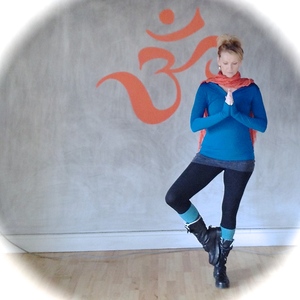
Photo courtesy of Hot Zen Yoga
Yoga in conjunction with conscious pranayama breathing while standing, seated, twisting, and/or balancing requires the use of our musculoskeletal system to work in conjunction with the muscles responsible for all breathing: Diaphragm, intercostal spaces, sternocleidomastoids, scalenes, and specific core muscles like the Rectus Abdominus and Internal Obliques. By pure definition, we now establish the activation of our unique physical awareness of proprioception with yoga as a physical practice. (4, 5, 8)
Let us not stop there. Isolating yoga at one of its limbs -- Pranayama breathing and meditation, allows us to access unconscious levels of awareness, which we have already established are as important as the physical awareness. Several techniques of Pranayama breathing are built into a yoga practice session before, during and after physical Yoga asana. Our unconscious level of awareness is activated in yoga because as the body moves in physical practice, our body alters its perception of the here and now. This is unique to yoga in that the student may use resistance training and flexibility in physical practice to keep the body active in yoga practice, the student is encouraged to draw the attention inward as a discipline to quiet the mind and create a stillness. This allows the body to rest while active, and is unique to Yoga alone. (4, 6-8) The Yoga practice as a whole presents a unique health benefit only partially related to the physical activity component alone. (3, 4) This supports the original point: Yoga-tta Breathe to Be Bendy.
Biologists, Physiologists, and other advanced professionals are making strides in research using Yoga. The physical practice of Yoga can be adapted to suit anyone's needs, and this may very well lead to advancements in both science and quality of life. Why is this so important? Here are some take away points about why Yoga-tta Breathe to Be Bendy.
- If we combine breath with movement, we rely less on oxygen intake alone and more on our muscle strength to power and fuel us through yoga. Yoga practice over time helps us control the muscles and heart rate, decrease fatigue, and use oxygen better throughout the whole body. (2, 4, 6)
- Controlling inhalation and exhalation and the rate at which we do so has unlimited positive effects on our continued yoga practice and proprioceptive function as well as life-sustaining enhanced quality in our everyday tasks. Off the mat, there is a reported increase of strength and stability in the muscles of both the skeletal and respiratory system actively and at rest. (2, 4, 6-8)
- When we breathe better at rest, continued yoga practice can be used as a tool in assisting the body's ability to remove waste gases like CO2 more efficiently. (2, 6, 7) A build up of CO2 in the blood can cause fatigue, shortness of breath, confusion, muscle weakness, and lead to more serious health risks. Regular yoga practice and exercise will reduce overall levels of CO2 in the body and lead to a better quality of life. (6,7)
Join the YOUR BODY, YOUR YOGA revolution. Sit up, breathe in...breathe out...
Melissa Nordin is a Clinical Exercise Physiologist, Anatomy and Physiology Instructor, Registered Yoga Teacher, Fitness Nutrition Specialist, Prenatal Fitness Specialist, and Health and Wellness Director in Florida. Check out her website for free printable classes, sample exercise programs, workshops, and more at www.yogabreezes.com. Follow along with the YBeBendy Facebook page. Coming Soon: Yoga School of Motion Yoga Alliance approved 20 hour Anatomy and Physiology Program.
SOURCES:
